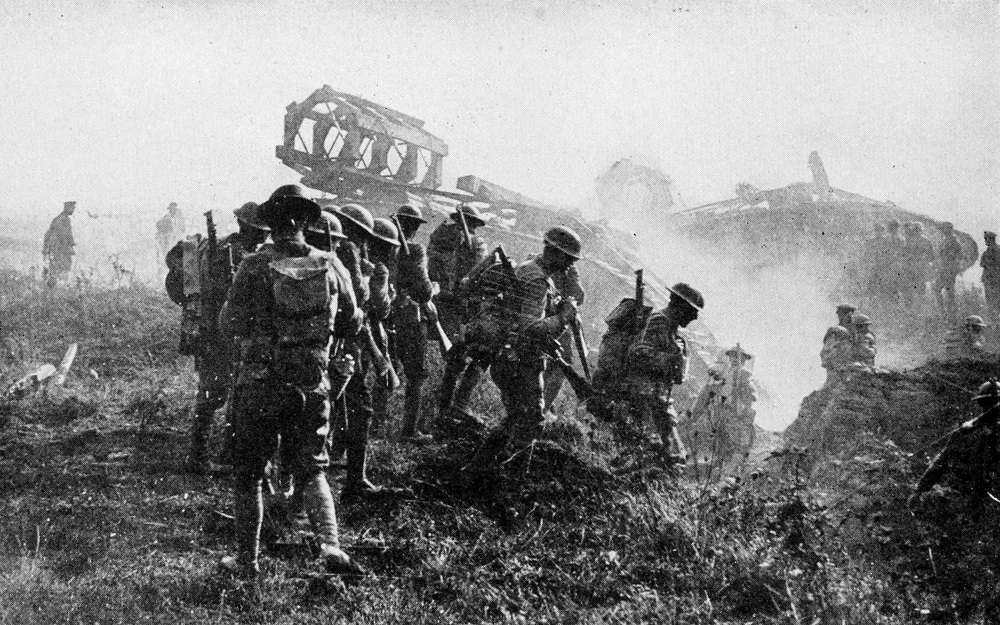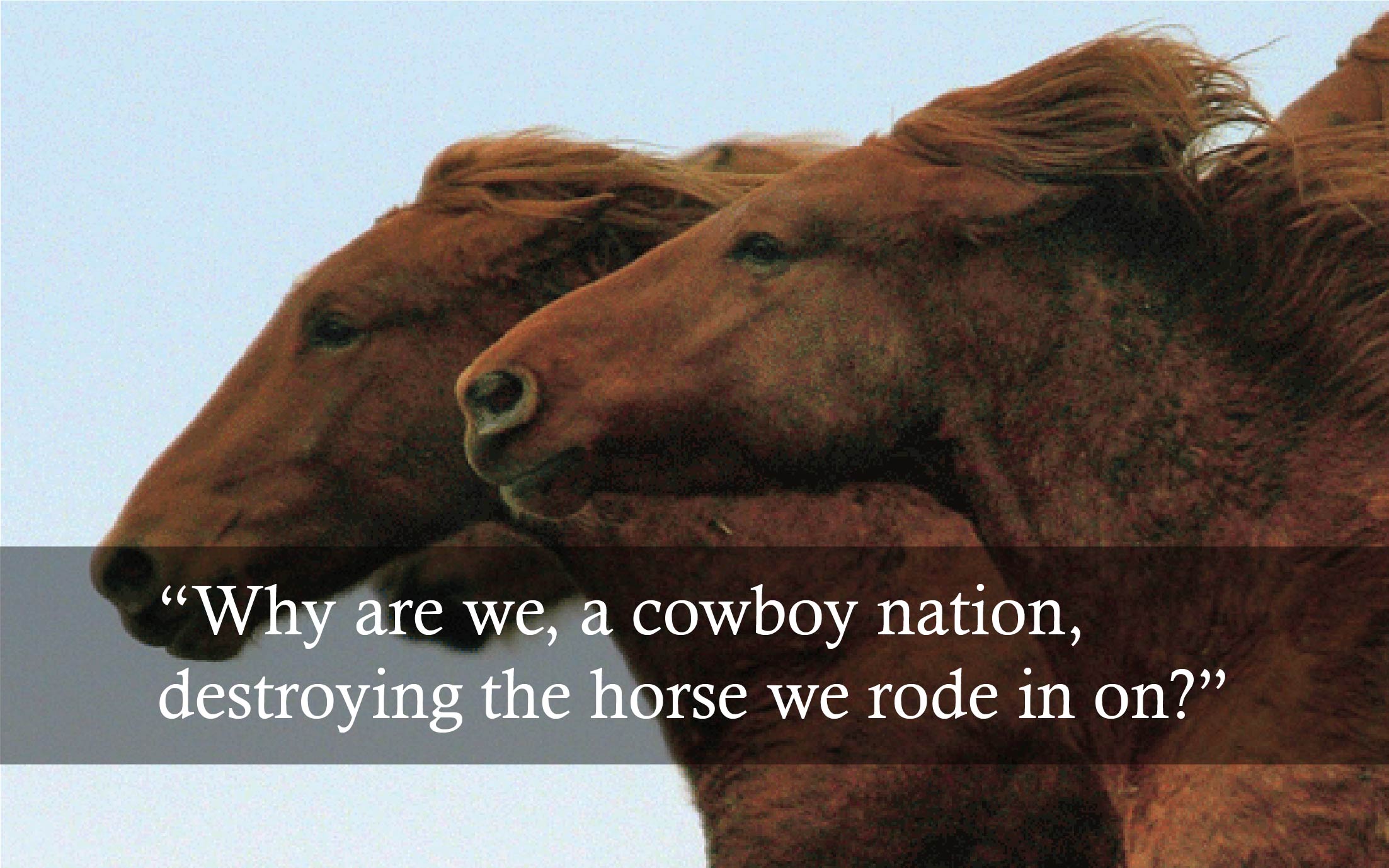
MAD DASH FOR THE FIRING LINE: A STUDY IN PRE-WORLD WAR I AMERICAN XENOPHOBIA
The outbreak of World War I simply changed everything, altering human experience on several levels. Michael Neiberg opens discourse here with Dance of the Furies, where he shows that in Europe, the notion of nationalism was rare before war’s outbreak.[1] Countries struggled to keep pace as hysteria spread and inter-nationalist tension increased, feeding the populace with illusions of the conflict as a defensive, short-lived fight once fervor died and war’s reality set in.[2]
Across the Atlantic, President Woodrow Wilson had initially endeavored to keep the United States out of the war, urging citizens to remain neutral. Repeated aggressions, however, including the sinking of the Lusitania by German U-boats and the famed Zimmermann telegram, finally forced his hand, and the United States of America declared war on Germany on April 2, 1917.[3] Wilson now faced the dilemma of engendering popular support for total war. He reintroduced the military draft and created the Committee on Public Information (CPI), the first propaganda agency in American history.[4] By exhuming the draft, Wilson resurrected the concept of national duty. In using the CPI, he also galvanized America’s war-related apprehensions into vivid patriotism.
Unlike weak nationalism in Europe, American wartime frenzy was fueled by long-standing xenophobia, its seeds sown by mid- to late nineteenth century immigration waves. “Hyphenism” assumed an almost criminal connotation. Those families who escaped xenophobic wrath worked to hide their heritage, some even changing their last name to one more “American.”[5] Male family members made haste to enter service so as to appear more patriotic.
Analyzing a correspondence collection of three sons in the Lindstadt family, who were of Swedish descent, offers insight into xenophobia’s propensity to shape immigrants’ and their children’s wartime experience. This examination also utilizes Iowa census and death records. The brothers’ correspondence collection includes letters penned by Clarence, Varnie, and Robert Lindstadt. With these letters as cornerstones, I argue that a sense of duty or simple desire to fight were not core factors influencing second generation volunteer or drafted soldiers. Ethnic identity, or the drive to suppress it in an overly-galvanized xenophobic atmosphere, was also a strong catalyst.
Understanding why men fought in a minimally-supported war is much debated. In his work American Soldiers: Ground Combat in the World Wars, Korea, & Vietnam, Peter Kindsvatter considers primary group cohesion and devotion to the cause as mainstays in soldiers’ support. In presenting his argument, Kindsvatter focuses almost exclusively on memoirs, sociological surveys, and contemporary fiction. He purposefully neglects soldier correspondence, stating that letters lack important detail.[6] Kindsvatter’s view of fiction’s value as a source is well-founded, but letters lend immediacy, and grant readers a great deal of insight into a soldier’s mind and attitudes. They present a soldier’s raw attempts at understanding his experience, untainted by temptations offered by post-war mental processing.
Martha Hanna, in Your Death Would be Mine: Paul and Marie Pireaud in the Great War, supports the pro-correspondence front, stating that letters became “a mechanism for rendering a complicated, confusing, and often disorderly world more comprehensible.”[7] In her work, she uses a comprehensive set of correspondence written between Paul Pireaud and his wife, Marie, with a few memoirs and propaganda materials in supportive capacity. Hannah claims that once in uniform, men were motivated by economic imperative, honor, survival, and protecting the nation and their families from German invasion.
Despite some shortcomings, the Lindstadt correspondence can provide a similar look into the social and political landscape of World War I, from an American perspective. This collection is also comprehensive, making it a varied representation of individual thought, and familial tensions apparent within the brothers’ words shows vital candor. Attention to detail, handwriting style, tone, and diction are also key factors in understanding these men and their mentalities. The letters all initially ring with an eagerness to deploy and contain incendiary phrases and derogatory terms for foreigners. This attempt to appear as patriotic as possible — essentially furnishing proof of American identity — was an act of self-preservation in the face of epidemic xenophobia.
Clarence, Varnie, and Robert Lindstadt were of Swedish descent. Their father, John, emigrated from his home country in 1869, along with his wife Sophia. Once in the Midwest, they assimilated into a farming community and started a family. Their first child was Elmer, followed by Clara, Varnie, Clarence, and then Robert.[8] John passed away in 1912, leaving the care for his family in the hands of his sons, all of whom were involved in construction or craftsman occupations.[9]
Those sons who officially entered service joined the Army, but ended up in different ranks and companies. Clarence was assigned to Supply Company, 339th Field Artillery in the first portion of letters, and was later transferred to Company C, 307th Engineers (Nov 1918). Letters from his brothers home indicate that he in fact deployed (and was the first to travel overseas). There is no concrete evidence that he actually saw combat. As of February 1918, Varnie was assigned to the 339th as well, before Clarence was transferred. Come deployment, they were separated again and were only able to see each other once — a Sunday in January 1919. They dreamt when, in Varnie’s words, they “can shake the mud of France from our boots.”[10] By this time, Varnie was a mechanic in the American Expeditionary Forces (AEF) Company E, 33rd Engineers. Robert was the last of the sons to deploy, and had been assigned to a Casual Detachment, but he never saw combat.[11] Soon after his company arrived in England he contracted the mumps and spent nearly his entire overseas stint in medical facilities. After the war ended, he leapfrogged from Labor Battalion, 116th Ammunition Train to the Sunset Division, which redeployed back to the United States shortly after his assignment.
Reaching further into the letters and assessing appearance reveals the brothers’ unique personalities. In his letters, Clarence employs a lofty vocabulary, and has a firm grasp of grammar. His scope of topics indicates a self-educated and conversational man. Younger than Varnie but older than Robert, he must have enjoyed reading, as he often requests magazines and books. His handwriting, highly flourished and reminiscent of hands of old, also supports intelligence and creativity. His description of camp life is evocative: “…when at night one lies awake, you can hear far away on the hills, where the different companies [are] camped, the [bugler] now and then at intervals, which adds a bit of romantic, and adventurous feeling to the whole situation.”[12]
Varnie’s letters contain more grammatical and spelling errors than Clarence’s. His thematic scope is also more limited, and letters are shorter overall. His handwriting is practical, with a “standard” feel that neatly fits the page and which also changes with his mood (indicated by tone). He has a fiery personality and quick emotional triggers, evidenced by his particularly feisty treatment of an estranged family member.
Grammatical faults, crossed-out words, and spelling errors are prolific in Robert’s letters. His hand has a young, uneasy sense to it, though it is unclear if this is due to youth, immaturity, or lack of extensive use. Curiously, it becomes neater as his collection — and experience — progresses. The youngest of the three brothers, he is the most tender and caring, always asking after everyone and home, and trying to ensure that they receive money to stay afloat. Though he comes across as quiet, practical, and observant, he was clearly the most influenced by anti-German propaganda, as indicated by anti-German statements.
Even so, Robert is not the only brother to spout propaganda. In fact, all the brothers rave about destruction of the Germans and/or hail American prowess. They demonstrate a shining pride in being American and Iowan, but this constant propagandism blurs the lines between innate and instilled patriotism. In heartily trying to prove themselves as 100% American, they construct a buffer against the rising tide of xenophobia at home.
Demographics in the United States had shifted in the late nineteenth and early twentieth centuries, as 23 million people flowed into the country, most of them from Eastern and Southern European countries.[13] As this influx tipped the genealogical scales, the specter of xenophobia began to materialize and haunt everyday life. Ethnic groups tended to congregate in many regions and cities to better facilitate familiarity. These communities, however, proved a double-edged sword, as those native-born Americans living outside them grew mistrustful and worried that jobs, opportunities, and even culture would be usurped.
Census records indicate that the Linstadt family’s home county of Des Moines, Iowa, was one such ethnically-concentrated hamlet, consisting of mostly Scandinavian or German residents.[14] This settlement of Northern Europeans, characteristic of the Midwest, was due in part to the similarity of the land to their own, and allowed for easier transition. Scandinavian immigrants also came to escape economic downturn and to pursue a better chance at future financial security.[15]
Once the war gained momentum overseas, and “news” of German atrocities began to circulate, many formerly desirable immigrant nationalities fell prey to outright suspicion. In his book Strangers in the Land, John Higham discusses this “reversal of judgment.” Germans had been praised, Higham writes, for being “law-abiding, speedily assimilated, and strongly patriotic.”[16] However, come the war, the respect they enjoyed evaporated, swiftly replaced with fear, prejudice, and even vigilante violence. Faith in their loyalty was the first casualty. Nancy Gentile Ford expounds upon this point in Americans All! Foreign-Born Soldiers in World War I. She states that, “public war hysteria … fostered ethnic distrust and continued to depict immigrants in a negative…manner, repeating the need for 100 percent conformity.”[17]
Germans and German-born families clearly faced a daunting situation. As anti-German sentiment worsened, native-born Americans erected higher psychological and physical barriers. Germans were threatened out of public places, discrimination ran rampant, and the threat of violence was ever-present. Former president Theodore Roosevelt even stoked the flames, exclaiming in his October 12, 1915 speech, “There is not room in this country for hyphenated Americanism.”[18] To prove loyalty and belonging, German-Americans shouldered the burden of self-imposed integration by enlisting in military service.[19]
Scandinavians also endured a significant amount of anti-immigrant sentiment and action. Having come to America in pursuit of greener pastures, they had attempted to hold on to as much of their native culture as possible, namely the Swedish language. However, auditory similarities between Scandinavian and German sparked intensely negative reactions from native-born Americans once the war began. Attention primarily focused on members of the radical Industrial Workers of the World Union (IWW), a member of which, Joe “Häglund” Hill, was executed in 1915 after arrest for alleged murder. Hill had held much esteem as a popular songwriter, and many IWW members felt that the big business community had framed him.[20]
In light of this and other threats of violence, Scandinavian immigrants and their descendants also assumed the “American-or nothing” attitude, often forgoing the speaking of their native tongue even in their own homes.[21] Significantly, the Lindstadt brothers write their letters, including those to their Swedish-born mother, in English. This conscious choice prevented any negative attention from military censors, but is also an effort to maintain their appearance as patriotic Americans. They adopt a language with which their mother may have struggled. Furthermore, nowhere in the letter collection is there any mention, comparative statements, or discussion of Swedish custom, food, clothing, or social norms. Clearly, as Nancy Ford argues, one-hundred-percent conformity was the ultimate goal, and the only protection.
The Lindstadt brothers’ refusal to apply for exemptions also buttresses this idea. Following the first draft, about 3 million men were called for registration. Of those, about 50.6 per cent applied for exemption, and out of that number, 77.9 per cent were granted. Approximately 74 per cent of those granted were on grounds of dependency.[22] Sophia bore four sons, and three of them deployed.[23] Elmer, who stayed home the longest, had nearly been drafted before the war ended. With three breadwinners away fighting, it is curious that the family did not attempt keep at least one male in the household. Having just lost their father in 1912, it would appear that the remaining males were not only striving to provide for the family in a patriarchal vacuum, but competed to do so.
These and other developments marked a new era in American psyche. In her book War Time: An Idea, Its History, and Its Consequences, Mary Dudziak argues that in times of conflict, nationwide philosophy separates the “era” of war from that of peace time, and consequently civilian rights and relations are curtailed (to a degree). Governmental influence also enjoys inflation.[24] In order to muster public support, official policy will go beyond conventional practice and, in some cases, appropriate behavior. The Espionage and Sedition Acts of the World War One era epitomize this concept of portioned time. On the civilian scale, atrocious acts such as lynching foreign-born citizens became nearly excusable. This situation compelled those aiming to escape xenophobic wrath to mold themselves in the American image. Thus was the Lindstadt brothers’ reaction to wartime. They adopted anti-German sentiments, constantly referring to Germans as “Fritz,” “Huns,” or even Robert’s colorful “blood-thirsty barbarians.”[25] In joining the fervor of the period, the brothers firmly set themselves within the context of Americanist ideals by ensuring an American appearance — embracing it to avoid persecution.
As Dudziak implies, wartime initiated a change in the government-citizen dynamic. Nancy Ford discusses this increased complexity of the relationship between Wilson’s administration and the people in her article “Civilian and Military Power.”[26] Once war was declared, Wilson struggled with how to muster public support after enforcing neutrality. With patriotic xenophobia beginning to boil over, he chose to exploit it to promote service. Thus, the propaganda machine, the first of its kind, was born.
Establishing the Committee on Public Information (CPI), with prominent journalist George Creel at the helm, has proven a powerful precedent. In “Propaganda at Home,” Robert Wells details its creation, implementation, and legacy. He emphasizes the CPI’s capitalization on anti-foreign sentiments, apparent in nearly all print, oral, and visual campaigns. Most importantly, however, is Wells’ argument that, within the CPI, “truth [was] often casually dismissed….”[27] Creel, however, endeavored to convince himself (and the masses) that he was spreading the truth, even as he gave the proverbial stamp of approval on posters likening Germans to savage King Kong ancestors.
The Lindstadt brothers were not immune to these campaigns. Their letters are peppered with canned propaganda phrases, the most incendiary being Robert’s, “them blood-thirsty barbarians will learn to respect the star and stripes when Uncle Sam gets through with them.”[28] Its influence widespread in the ranks of American military and citizenry, propaganda’s very accessibility supplied momentum to self-preservative conformism.
Overall, World War I fell sharply short of Americans’ original expectations. Not only did this “war to end all wars” actually end peace, but many facets of its ugly face sparked negative societal developments. As Michael Neiberg insists, once World War I began and continued past the promised timeframe, intense patriotism, suspicion, and even hatred began to flourish.[29] This trend eventually spread to the United States, where seeds of xenophobia had already been sown. Waves of immigrants shifted American demographics, and native-born Americans soon grew wary of the newcomers. Previous acceptance became engulfed by virulent xenophobia, which eventually flared into frenzied patriotism.
The Wilson Administration understood this sentiment’s power, and used it as a catalyst to garner support. The CPI deftly wove its myths and successfully bloated the ranks of the United States’ military force. In doing so, it forever altered the relationship between the American populace and its government, which twisted or infringed on citizens’ rights to exercise authority on a new scale. By warping nationalist tendencies into provocative, anti-foreign messages, the propaganda machine set fear upon ethnically distinct groups.
Assimilation and analysis of letters written by Clarence, Varnie, and Robert Lindstadt has shed light on their wartime experiences in tandem with their familial origins. These letters illuminate the power of World War I-era xenophobic tendency in the United States. Without any understanding of the people in the war, we cannot hope to gain any insight as to the lessons it offers. What we learn from the Lindstadt brothers is that enlistment motivations changed as patriotic xenophobia ran rampant and many foreign nationalities faced negative attention or violent action. It was typically not innate patriotism or a sense of duty driving immigrants and those with foreign heritage to enlist. Suspension of ethnic pride and identity to assure others of their American ideals and patriotism remain pivotal factors in their mad dash for the firing line.
The question beckons, what exactly is patriotism, then? Does it matter from whence the well of support springs, so long as the actual desired goal is met or exceeded? Do the ends really justify the means? When governments actually use xenophobia and the violent tendencies of civilians to their advantage, ethnic identity and diversity — lynchpins of our nation today — are shelved. Indeed they must be shelved to promote solidarity and conflict resolution. One-hundred percent conformity therefore makes a successful campaign.
But this idea is laced with falsehood. Misleading messages can only foment discord, at least eventually. Internal rage at being duped festers in the communal psyche, and in this case it manifested in a backlash of disillusionment among Americans. Once the war was over, armistice declared, and the Paris Peace Conference on the books, Woodrow Wilson was quoted saying to George Creel, “It is a great thing you have done, but I am wondering if you have not unconsciously spun a net for me from which there is no escape.”[30] Recent American history has revealed the prophecy of Wilson’s words. The United States of America, in its execution of World War I, indeed wove a precarious set of precedents that have been applied — and misapplied — in modern execution of policy.
[1] Michael S. Neiberg, Dance of the Furies: Europe and the Outbreak of World War I (Cambridge: The Belknap Press of Harvard University Press, 2011), 72.
[2] Neiberg, Furies, 135.
[3] Kurt Piehler, “Remembering the War to End all Wars,” in Unknown Soldiers: The American Expeditionary Forces in Memory and Remembrance. Ed. Mark A. Snell (Ohio: Kent University Press, 2008), 28.
[4] Neil M. Heyman, World War I (Connecticut: Greenwood Press, 1997), 66-67.
[5] Nancy Ford, “Civilian and Military Power (USA),” 1914-1918 International Encyclopedia of the First World War. Accessed October 24, 2015, doi: 10.15463/ie1418.10030, 3.
[6] Peter S. Kindsvatter, American Soldiers: Ground Combat in the World Wars, Korea, & Vietnam (Kansas: Kansas University Press, 2003), xv.
[7] Martha Hanna, Your Death Would Be Mine: Paul and Marie Pireaud in the Great War (Cambridge: Harvard University Press, 2006), 299.
[8] “Iowa State Census, 1925.” Database with Images. FamilySearch. Burlington (East 2nd Ward – West 4th Ward), Des Moines, Iowa, United States; citing Iowa State Historical Department, Des Moines: FHL Microfilm 1,429,303, accessed October 17, 2015, URL: http://www.familysearch.org/ark:/61903/1:1:QKQH-39HS. Vague references in the correspondence also indicate that the family may have extended further. There is frequent mention of another daughter/sister, Amanda, who was estranged from the family (the mother of Dorothy and Marguerite, addressed as Clarence’s nieces), and possibly yet another son, Ed, who lived in California.
[9] “Iowa, County Death Records, 1880-1992.” Database. FamilySearch. John Lindstadt, 07 Dec 1912, citing Death, United States, County Archives, Iowa: FHL Microfilm 1,547,821, accessed October 17, 2015, URL: http://familysearch.org/ark:/61903/1:1?QVJP-KRY3
[10] Clarence Lindstadt to Brothers, 13 February 1918, Linstadt Brothers World War One Correspondence (2014.031.w.r.), The Frank Mt. Pleasant Library of Special Collections & Archives, Chapman University (hereafter Linstadt Brothers Correspondence).
[11] Varnie Lindstadt to mother Sophia, 16 January 1919, Lindstadt Brothers Correspondence.
[12] Evidence suggests that Elmer – the only son remaining at home, was part of the late 1918 draft registration wave, but there is no proof he ever was officially drafted or went to camp.
[13] Clarence Lindstadt to niece Dorothy Hornberger, 12 September 1917, Hornberger World War One Correspondence (2014.32.w.r.), The Frank Mt. Pleasant Library of Special Collections & Archives, Chapman University (hereafter Hornberger Correspondence).
[14] “Iowa State Census, 1925.” Database with Images. FamilySearch. Burlington (East 2nd Ward – West 4th Ward), Des Moines, Iowa, United States; citing Iowa State Historical Department, Des Moines: FHL Microfilm 1,429,303, accessed October 17, 2015, URL: http://www.familysearch.org/ark:/61903/1:1:QKQH-39HS.
[15] . “Scandinavian Immigration,” U.S. Immigration and Migration Reference Library (2004): 283-313, accessed October 24, 2015, URL: http://ic.galegroup.com/ic/uhic/ReferenceDetailsPage/DocumentToolsPortletWindow?displayGroupName=Reference&action=2&catId=&documentId=GALE%7CCX3436800020&source=Bookmark&u=beth65358&jsid=80591e5f536892b59675fc5986822d91
[16] John Higham, Strangers in the Land: Patters of American Nativism 1860-1925 (London: Rutgers University Press, 1998), 196.
[17] Nancy Gentile Ford, Americans All! Foreign-Born Soldiers in World War I (Texas: Texas A & M University Press, 2001), 137.
[18] Theodore Roosevelt quoted in Mary J. Manning, Being German, Being American: In World War I, They Faced Suspicion and Discrimination Here at Home, (online pdf, copyright 2014), accessed November 1, 2015, https://www.archives.gov/publications/prologue/2014/summer/germans.pdf, 16.
[19] Manning, German, American, 17.
[20] Higham, Strangers in the Land: Patterns of American Nativism 1860-1925, 204.
[21] “Scandinavian Immigration,” U.S. Immigration and Migration Reference Library (2004): 283-313, accessed October 24, 2015, URL: http://ic.galegroup.com/ic/uhic/ReferenceDetailsPage/DocumentToolsPortletWindow?displayGroupName=Reference&action=2&catId=&documentId=GALE%7CCX3436800020&source=Bookmark&u=beth65358&jsid=80591e5f536892b59675fc5986822d91
[22] “Two Thousand Questions and Answers About the War.” Gjenvick-Gjønvik Archives, accessed November 1, 2015, http://www.gjenvick.com/Military/WorldWarOne/TheDraft/SelectiveServiceSystem/1918-TheSelectiveDraft-QuestionsAndAnswers.html#.
[23] Sophia may have borne more sons, refer to EndNote 8.
[24] Mary Dudziak. War Time: An Idea, Its History, Its Consequences (New York, New York: Oxford University Press, 2012), 8.
[25] These “nicknames” occur at several points in the letters, and American ones for American soldiers are also used. The most notable are Varnie to sister Clara, 24 June 1918, Lindstadt Brothers Correspondence (Americans as “Yanks”) and Robert to Clara, 1 August 1918, Lindstadt Brothers Correspondence (Germans as “barbarians”).
[26] Nancy Ford, “Civilian and Military Power (USA),” 1914-1918 International Encyclopedia of the First World War. Accessed October 24, 2015, doi: 10.15463/ie1418.10030, 1.
[27] Robert A. Wells, “Propaganda at Home (USA),” 1914-1918 Online International Encyclopedia of the First World War, accessed October 24, 2015, doi: 10.15463/ie1418.10360, 8.
[28] Robert to Clara, 1 August 1918, Lindstadt Brothers Correspondence.
[29] Neiberg, Dance of the Furies: Europe and the Outbreak of World War I, 135.
[30] Woodrow Wilson quoted in Robert A. Wells, “Propaganda at Home (USA),” 1914-1918 Online International Encyclopedia of the First World War, accessed October 24, 2015, doi: 10.15463/ie1418.10360, 8.



